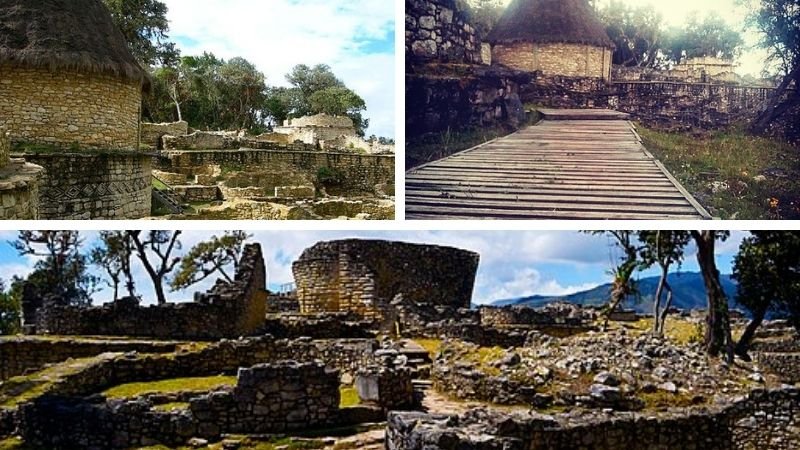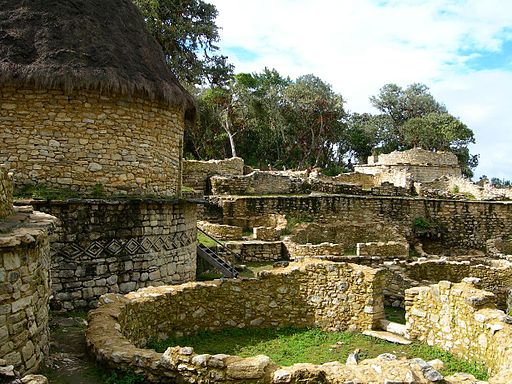
The Kuelap Fortress is a pre-Hispanic archaeological complex in the mountainous jungle of Peru, being built and inhabited by the Chachapoyas(1,000 to 1,400 AD) (Tavera Vega, s.f.).

Source: Elemaki, CC BY-SA 2.5, via Wikimedia Commons
archaeological discovery
In 1843, Juan Crisóstomo Nieto, judge and prefect of the city of Chachapoyas, discovered this fortress in the northeastern region of Peru.
A century later, at the end of the first half of the 20th century, the first archaeological excavations were carried out in Kuélap, directed by the French spouses Henri and Paule Reichlen in 1950 and later by Arturo Ruiz Estrada in 1972.
Since 1986, with the work within the framework of the Kuélap Project, led by Alfredo Narváez, important information about the history of this place has been elucidated, initiating its conservation and valorization process (Church and Guengerich, 2017).
In Kuélap, archaeological and natural tourism resources are combined.
Location
It is located in the upper part of a geological formation that stands out in the Kuélap village, in the El Tingo district, province of Luya in the Peruvian Amazon, over 3,000 meters above sea level, located about 107 kilometers from the Chachapoyas city (Puscán Briceño and Sabrera Salazar, 2019).
Description of the Kuelap Fortress
The Kuelap Fortress measures about 584 meters long and about 110 meters wide, occupying an area of 6 hectares; It is surrounded by a wall that varies between 10 and 20 meters in height, built with limestone cut or carved without polish, with the presence of architectural elements such as guard posts, a tower and three narrow entrances (Ministry of Foreign Trade and Tourism, 2017; Tavera Vega, s.f.).

Photograp travel, CC BY-SA 4.0
This fortified citadel can be classified as a cultural manifestation of the archaeological type and subtype “buildings” (Ministry of Foreign Trade and Tourism, 2019).
Inside the Kuelap Fortress there are about 505 structures considered dwellings, which are distributed in various areas and levels, mostly circular, except 4 rectangular and 1 square, which have been rebuilt for conservation purposes. heritage and tourism.

Access roads
This archaeological complex was declared Cultural Heritage of Peru in 1998 and on March 2, 2017, the cable car or gondola lift system was inaugurated, between the town of Tingo Nuevo and Kuelap, to reduce access time and facilitate arrival at this tourist attraction. (Puscán Briceño and Sabrera Salazar, 2019).
References
- Church, W. y Guengerich, A. (2017). La (re)construcción de Chachapoyas a través de la historia e historiografía, Boletín de Arqueología Pucp, (23), 5-38.
- Ministerio de Comercio Exterior y Turismo. (2017). Zona arqueológica monumental Kuélap. Lima: SIGMINCETUR. Recuperado de http://_cha.sigmincetur.mincetur.gob.pe/index.aspx?cod Ficha=754.
- Ministerio de Comercio Exterior y Turismo. (2019). Mapa de ubicación de recursos turísticos y emprendimientos de turismo rural comunitario. Lima: SIGMINCETUR. Taken from https://sigmincetur.mincetur.gob.pe/turismo/.
- Puscán Briceño, L. y Sabrera Salazar, R. M. (2019). El efecto en la inversión en infraestructura sobre la demanda turística: Evidencia del Complejo Arqueológico Kuélap. Tesis de grado. Lima: Universidad Científica del Sur. (PDF).
- Tavera Vega, L. S.f. Kuelap, recuperado de https://www.arqueologiadelperu.com.ar/kuelap.htm.
This post is also available in:
![]() Español (Spanish)
Español (Spanish)
